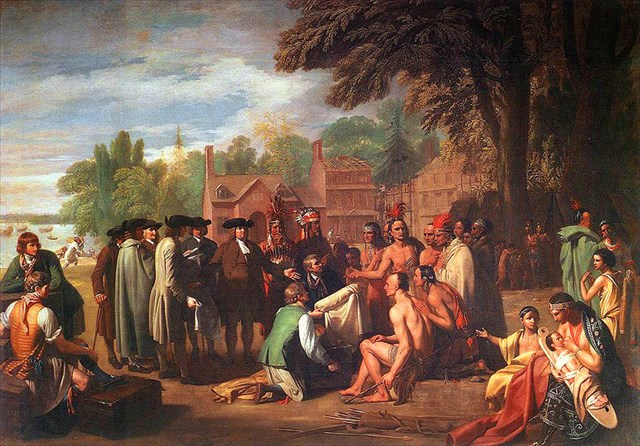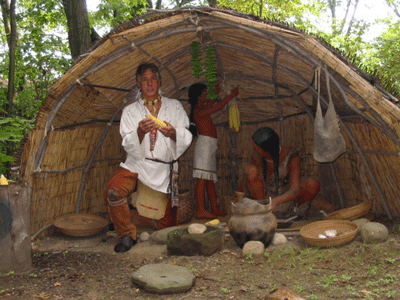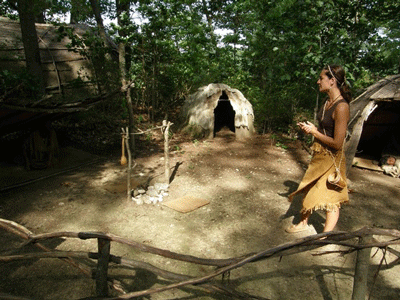
Geocache Identification Permit Approval Number: WVHS20161028002
Permit Expires on: 10/28/19
The Morris Canal at Waterloo Village Historic Site is a restored 19th century canal town in Byram Township, Sussex County in northwestern New Jersey. The community was approximately the half-way point in the roughly 102-mile (165 km) trip along the Morris Canal, which ran from Jersey City, NJ across New Jersey to Phillipsburg, PA
The Lenape Village at historic Waterloo Village was created to help visualize the past. Located in Allamuchy Mountain State Park, Sussex County, on an island in Waterloo Lake, the Lenape Village - called Winakung ("Place of Sassafras") - is surrounded by thousands of acres of wooded forests, stone cliffs, streams and marshes, home to beaver, osprey, and the occasional bear. It is a place of wonder and a land seemingly left alone by time. Here you can walk 400 years into the past and experience an ancient and gentler way of life.
The coming of the Dutch, Swedish and English explorers, settlers and traders changed the lives of the Lenape Indians. English beads, iron axes, kettles, ornaments, cloth and clothing, guns, knives - all were irresistible to the Indians for their social prestige, utility and decorative appeal. The Indians obtained the trade items by selling the pelts of beaver, bear, otter and deer. To satisfy the trader’s demands, the Indians had to look beyond their own territorial hunting grounds, which brought them into conflict with other Indian tribes, with frequently deadly consequences.
 Treaty of William Penn with the Lenape
Treaty of William Penn with the Lenape
The Europeans and Indians had very different attitudes toward the use of natural resources. Indians believed that “Kishelemukong” had created the land with its plant and animals for the enjoyment of all. Land could not be owned by any individual or group. European colonists, by contrast, came from an overpopulated part of the world where land was wealth. What the White man could not get by purchase or treaty was soon obtained thorough trickery, murder and the wars that resulted from the fur trade.
The valleys of Northwest New Jersey, scooped out of the earth's surface by the glacial retreat, left a fertile area teeming with wildlife that eventually became home to the first paleo Indians around 8600 BC, beginning a native American history from the archaic period to the woodland culture of the Lenape. An Algonkian speaking people, the Lenape tribe was one of the most advanced and civilized in the eastern US.
Lenape civilization, known as the Minisink in this area, is commemorated on our modern map with familiar names like Kittatinny, Allamuchy, Musconetcong, Netcong, Pahaquarry, Hopatcong, and many others. Archeological sites have yielded a multitude of artifacts that inform us of their culture. The lodges, huts, pottery and agriculture implements found through archeology are an important part of our academic understanding of how the Lenape lived. Only a rough sketch of a robust culture remains … we know nothing of the human deeds and dramas that occurred.
 Lenape Family
Lenape Family
The Lenape Village at historic Waterloo Village was created to help visualize the past. Located in Allamuchy Mountain State Park, Sussex County, on an island in Waterloo Lake, the Lenape Village - called Winakung ("Place of Sassafras") - is surrounded by thousands of acres of wooded forests, stone cliffs, streams and marshes, home to beaver, osprey, and the occasional bear. It is a place of wonder and a land seemingly left alone by time. Here you can walk 400 years into the past and experience an ancient and gentler way of life.
 Lenape Village
Lenape Village
The Lenape Village on Winakung Island in Waterloo Lake is a faithful reproduction, including long houses, huts, women's quarters, burial grounds, dugout canoes, carvings, and artifacts. Dotted with bark wigwams, longhouses, native garden, fishing, hunting, and cooking areas, the village revives the Lenape world as it might have been in 1630, when European traders visited Indian communities to barter metal pots, iron axes, scissors, cloth, glass beads and other items for furs and skins.
Winakung is a place of wonder once again, believable and archaeologically correct. The shapes and sizes of the houses are patterned on those excavated at Minisink Indian sites in the upper Delaware Valley, and the stone tools and pottery vessels have been modeled on excavated specimens or patterned after established ethnographic models.